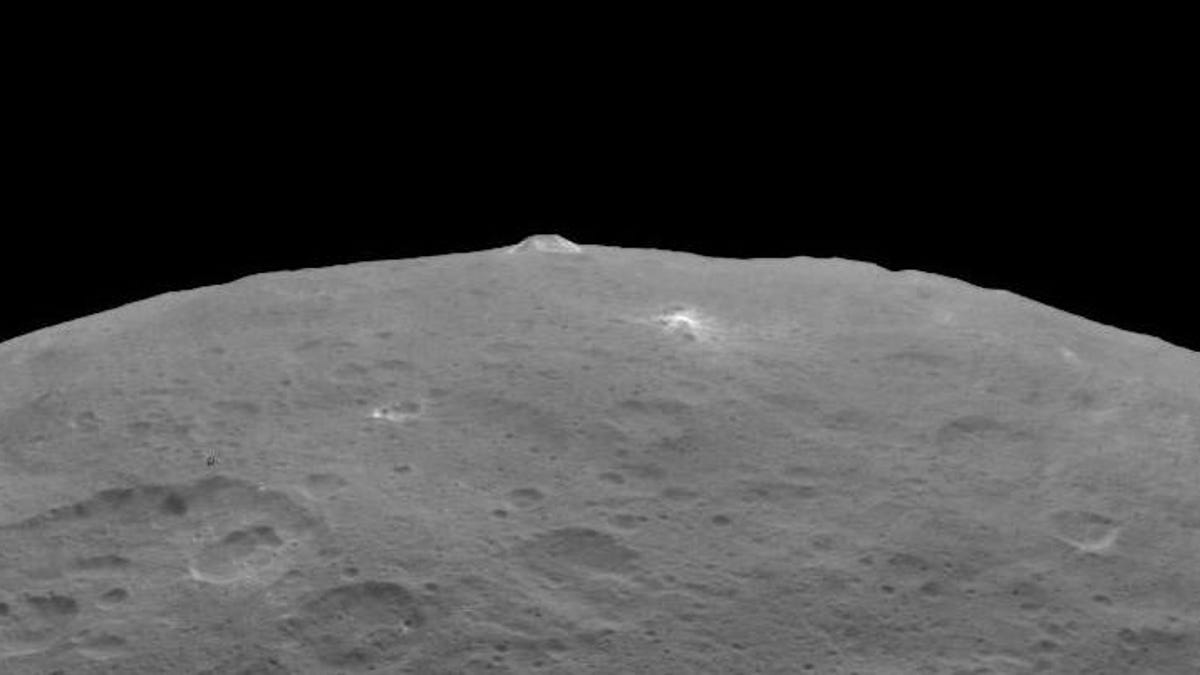Scientists discovered dozens of ice volcanoes on Ceres
Ice, ice, baby volcano? New research on the dwarf planet shows that it is definitely not Vanilla.

It sounds like something George R. R. Martin might cook up in the next Game of Thrones book: Ice Volcanoes.
New research suggests the dwarf planet Ceres, the largest celestial body in the asteroid belt between Mars and Jupiter, is home to dozens of volcanoes that spew water ice and gases known as "cryomagma".
Terrifying.
In 2015, NASA's Dawn spacecraft entered orbit around Ceres and started taking images. The probe gave scientists the most comprehensive look at Ceres yet, revealing its cratered surface and a volcano stretching 2.5 miles into the sky they dubbed "Ahuna Mons". Research in 2016 suggested that Ahuna Mons was a geological phenomena known as a "cryovolcano".
Literally, an ice volcano.
The latest research, published online Monday in Nature Astronomy, suggests Ahuna Mons isn't just an extremely cool (sorry) anomaly. In fact, Ceres may have dozens of cryovolcanoes dotted about its surface. By using computer modelling and images taken from NASA's Dawn spacecraft, a team of US-based researchers were able to identify 22 domes they suspect may have been active cryovolcanoes over Ceres' history. Their average diameters ranged from around 10 to 54 miles, making some smaller than Ahuna Mons.
Cryovolcanoes aren't just limited to Ceres, though. Analysis of Pluto and Saturn's moons, Enceladus and Titan, have also revealed features that suggest they may be home to ice volcanoes too. However, no other spacecraft has orbited a celestial body with the unique geological formations -- so Ceres provides a great opportunity to study them.
Despite the abundance of information acquired by Dawn, Ceres remains quite mysterious -- the features scientists continue to notice don't always seem to fit with their assumptions about dwarf planets. As Dawn continues to orbit Ceres, this is surely not the last time we'll hear about the solar system's ice volcanoes.
Maybe they'll even end up in the next Game of Thrones, hey George? (By then, we'll likely have visited Ceres in person, anyway.)
Taking It to Extremes: Mix insane situations -- erupting volcanoes, nuclear meltdowns, 30-foot waves -- with everyday tech. Here's what happens.
Batteries Not Included: The CNET team reminds us why tech is cool.

